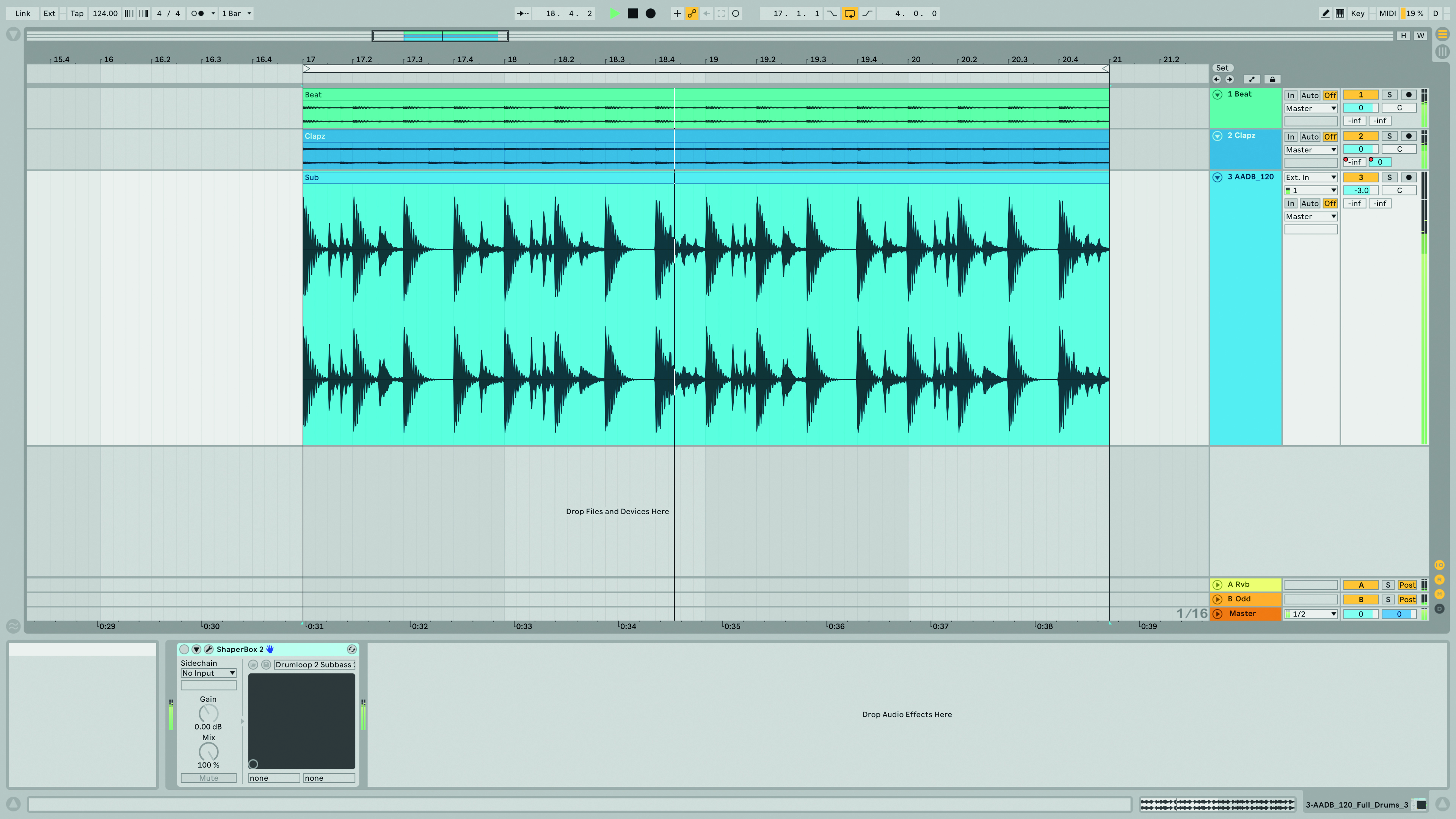How to morph a drum loop into a techno bassline
The art of turning one thing into another

We're going to show you how to create a rumbling sub bass using a percussive source sound...

Step 1: Start with any basic four-to-the-floor drum loop from a sample pack. Ensure that the loop’s kick and percussive elements feature sufficient low frequencies, as this bass content can be boosted and shaped at a later stage.

Step 2: Transform the loop’s clean timbre into something gnarlier by applying distortion, ring modulation and/or frequency shifting. We’re using auto-panning set to an uber-fast audio rate. Don’t worry too much about specific settings for now – you can come back and tweak later.

Step 3: If the loop needs more weight, tune it down using your DAW’s audio editing features or a pitch-shifting plugin. We’re using a real-time shifter to ramp down the loop’s pitch and time in tandem over every beat, turntable-style.

Step 4: Next, apply four-to-the-floor ducking to isolate the portions of the loop that occur between each beat. To achieve this, you can use sidechain compression keyed to a 4/4 kick, or a dedicated volume-shaping plugin for more precise control. After that, obliterate the signal’s dynamics with heavy compression.

Step 5: Now it’s time to turn the odd-sounding signal into a pumping wall of sub-bass frequencies. Throw a flavoursome low-pass filter next in the effects chain, set cutoff to a suitably low value, then ramp up the filter’s resonance to pull out those lows.

Step 6: You should now be left with a ducking sub-bass loop that snakes between your track’s four-squared kick notes. If the signal contains any stereo content, use a width-controlling tool to mono frequencies below 100Hz. Now the basic effects are in place, you can go back and fine-tune specific settings.
Get the MusicRadar Newsletter
Want all the hottest music and gear news, reviews, deals, features and more, direct to your inbox? Sign up here.
Future Music is the number one magazine for today's producers. Packed with technique and technology we'll help you make great new music. All-access artist interviews, in-depth gear reviews, essential production tutorials and much more. Every marvellous monthly edition features reliable reviews of the latest and greatest hardware and software technology and techniques, unparalleled advice, in-depth interviews, sensational free samples and so much more to improve the experience and outcome of your music-making.
"If I wasn't recording albums every month, multiple albums, and I wasn't playing on everyone's songs, I wouldn't need any of this”: Travis Barker reveals his production tricks and gear in a new studio tour
“My management and agent have always tried to cover my back on the road”: Neil Young just axed premium gig tickets following advice from The Cure’s Robert Smith










